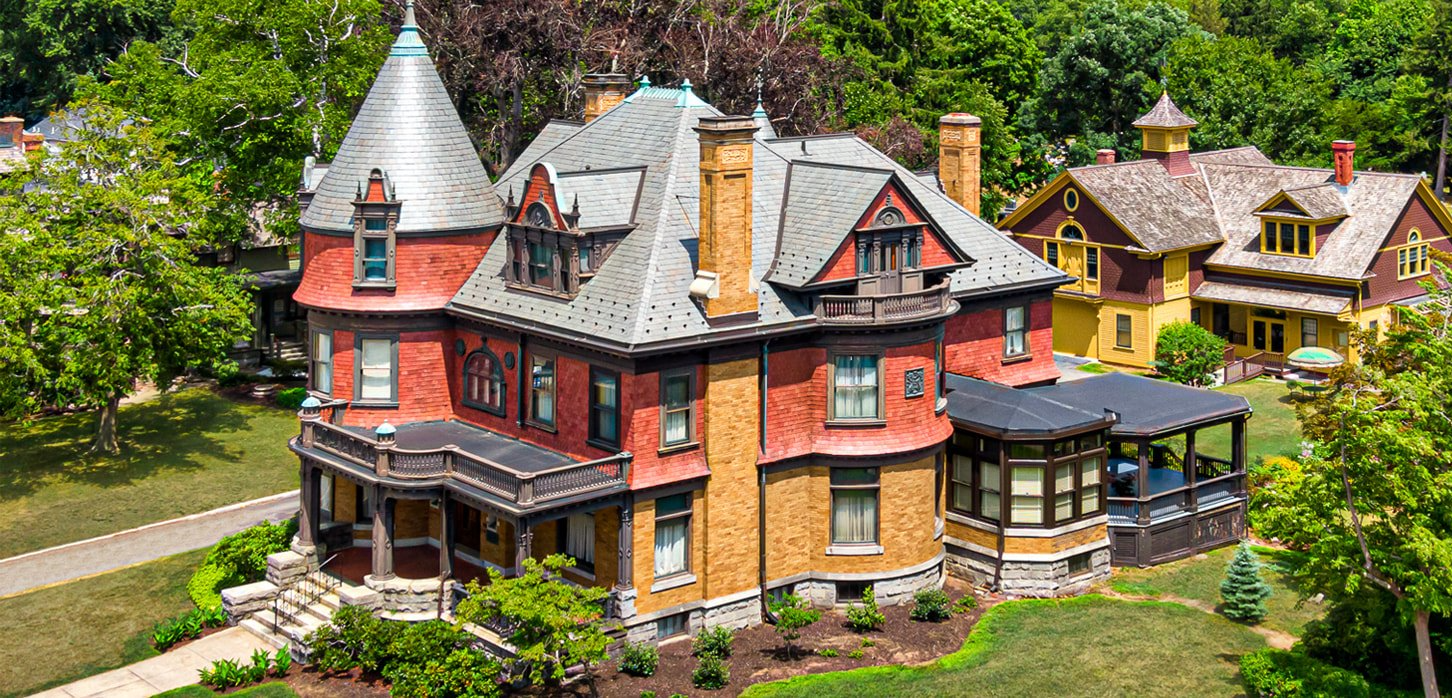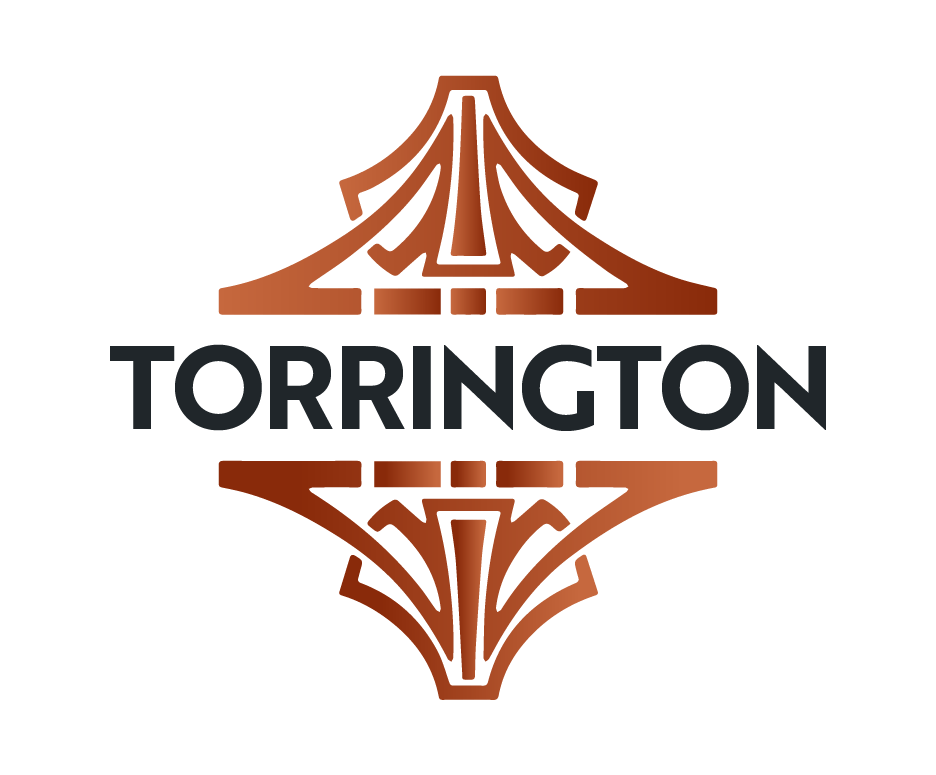Downtown Historical Walking Tour by Torrington Historical Society
Take a Walking Tour of the Downtown Torrington Historical District
Or "Whatever happened to Mast Swamp?" A tour by the Torrington Historical Society.
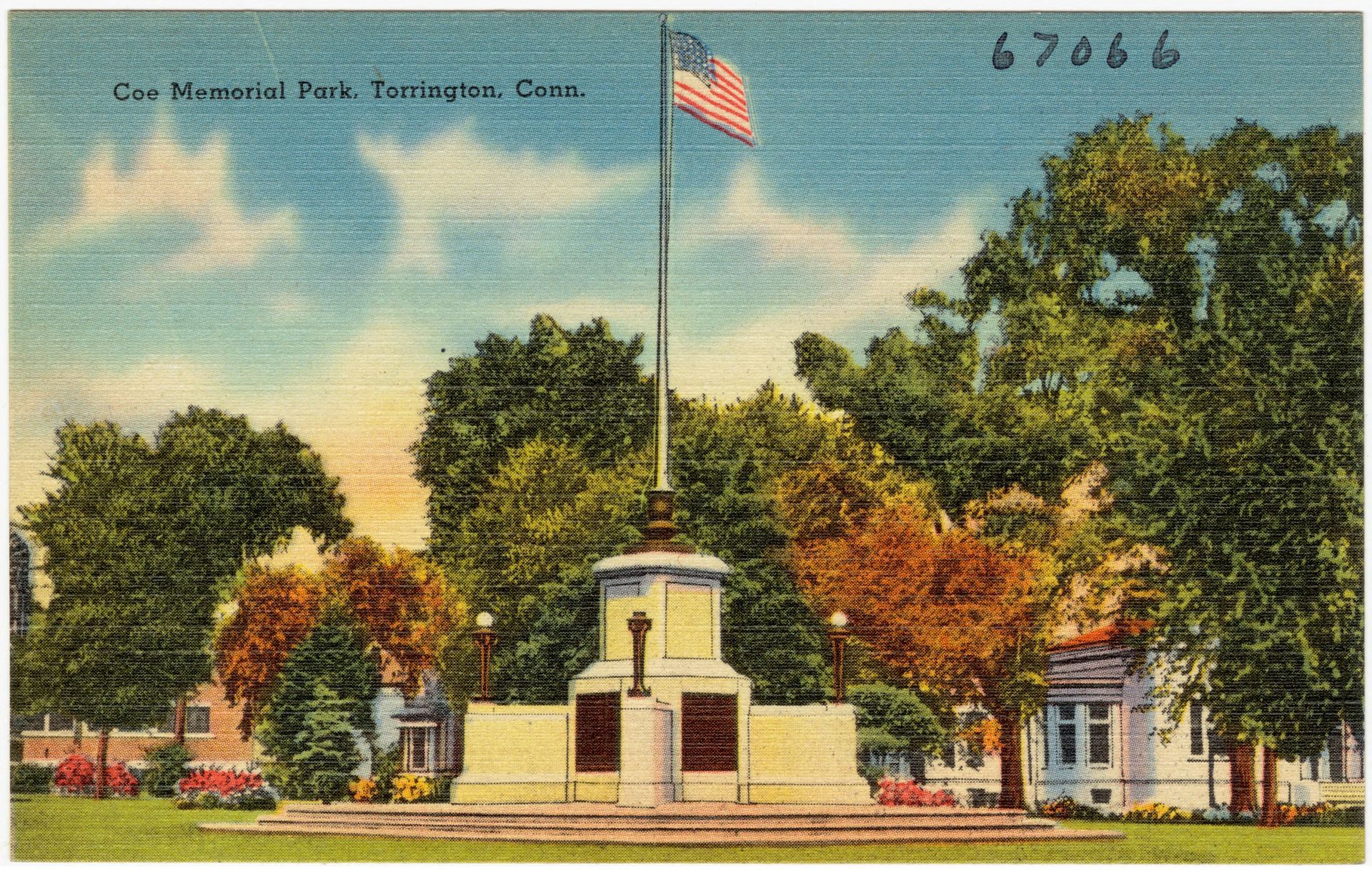
Explore historic downtown Torrington with this self-guided tour
In Colonial Times, downtown Torrington was known as Mast Swamp. It was a low-lying, wet area covered with massive pines and hemlocks that were claimed as ship masts for England’s Royal Navy. The land in Mast Swamp was divided among Torrington’s early settlers and most of the trees were sawn into lumber at Wilson’s Sawmill (1751) on the upper end of Water Street. Few, if any, became ship masts.
Torrington’s downtown was built here because the Naugatuck River supplied water power for mills and factories in an era before steam power and electricity. A woolen mill was built on lower Water Street by Frederick Wolcott in 1813. This mill brought workers to the river valley and a village of stores and homes sprang up around it. The village became known as Wolcottville and would continue to grow into the urban center that we now call downtown Torrington.
Immigration from Europe greatly expanded Torrington’s population between 1870 and 1900. During that time most of Wolcottville’s wooden buildings were replaced with more fire-resistant brick structures. In the decades that followed, buildings were built or remodeled in the popular Art Deco, Art Moderne, and Colonial Revival styles. Along the streets of downtown Torrington you will see the work of architects, builders, and property owners who have created a unique sense of place.
Today, many of these historic buildings are home to arts and cultural organizations that are breathing new life into the Downtown Torrington Cultural District.
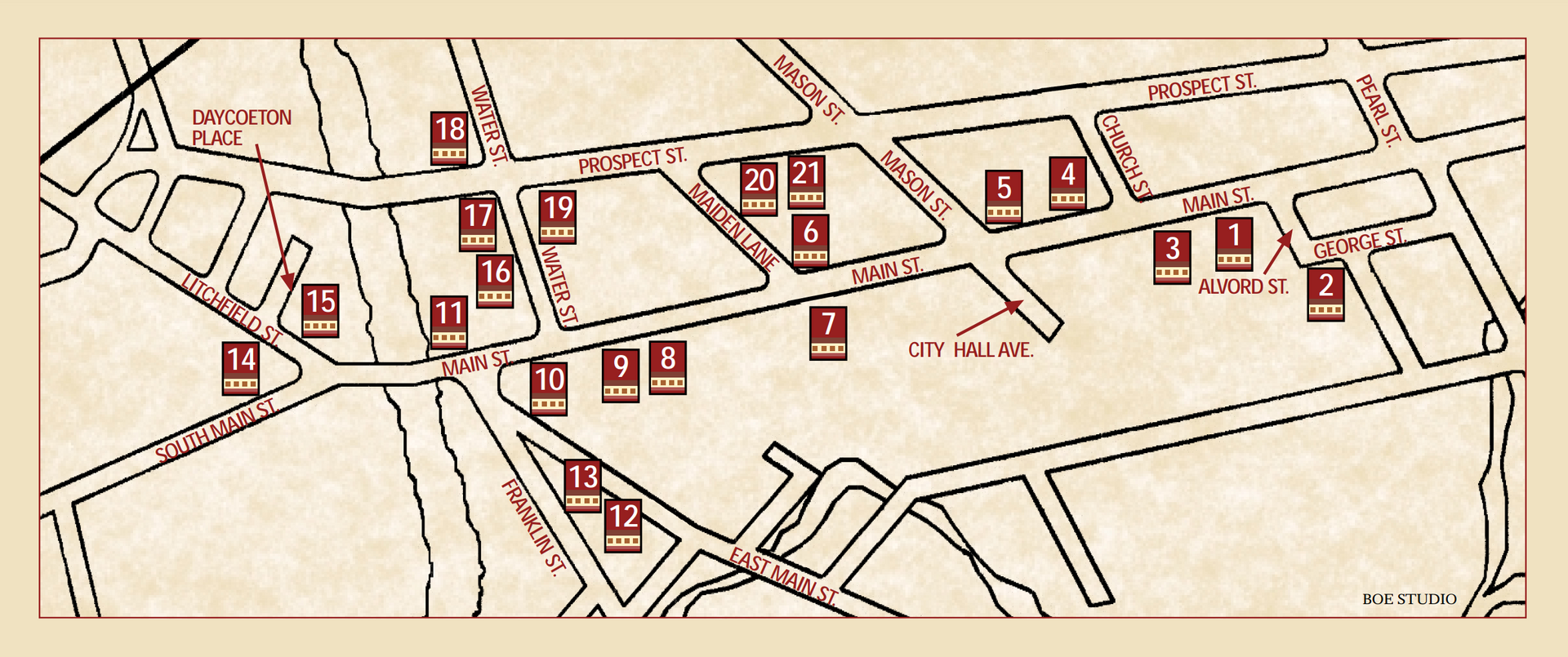
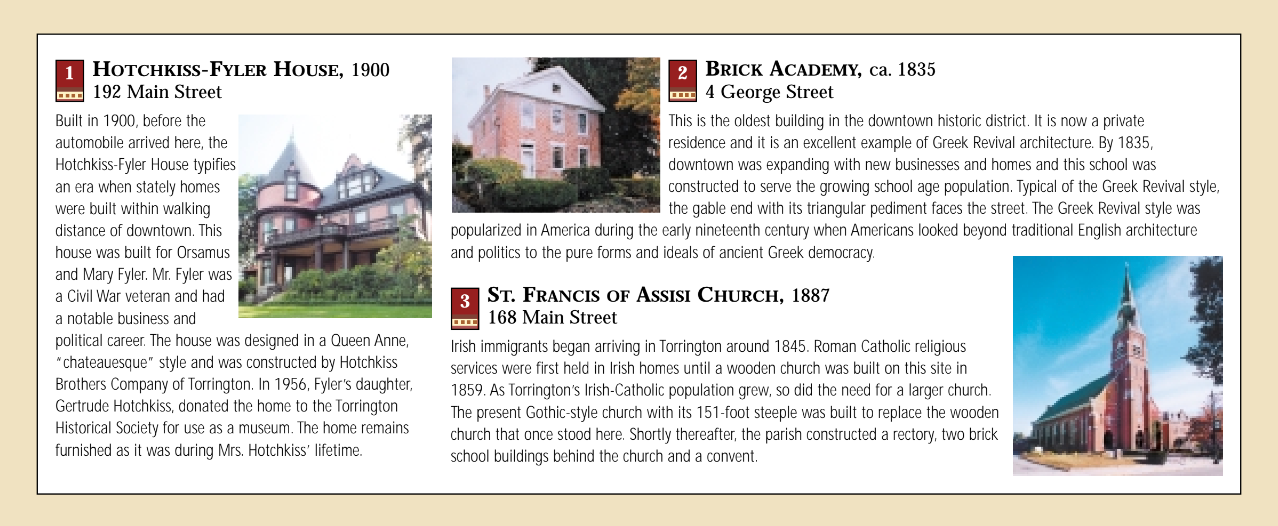
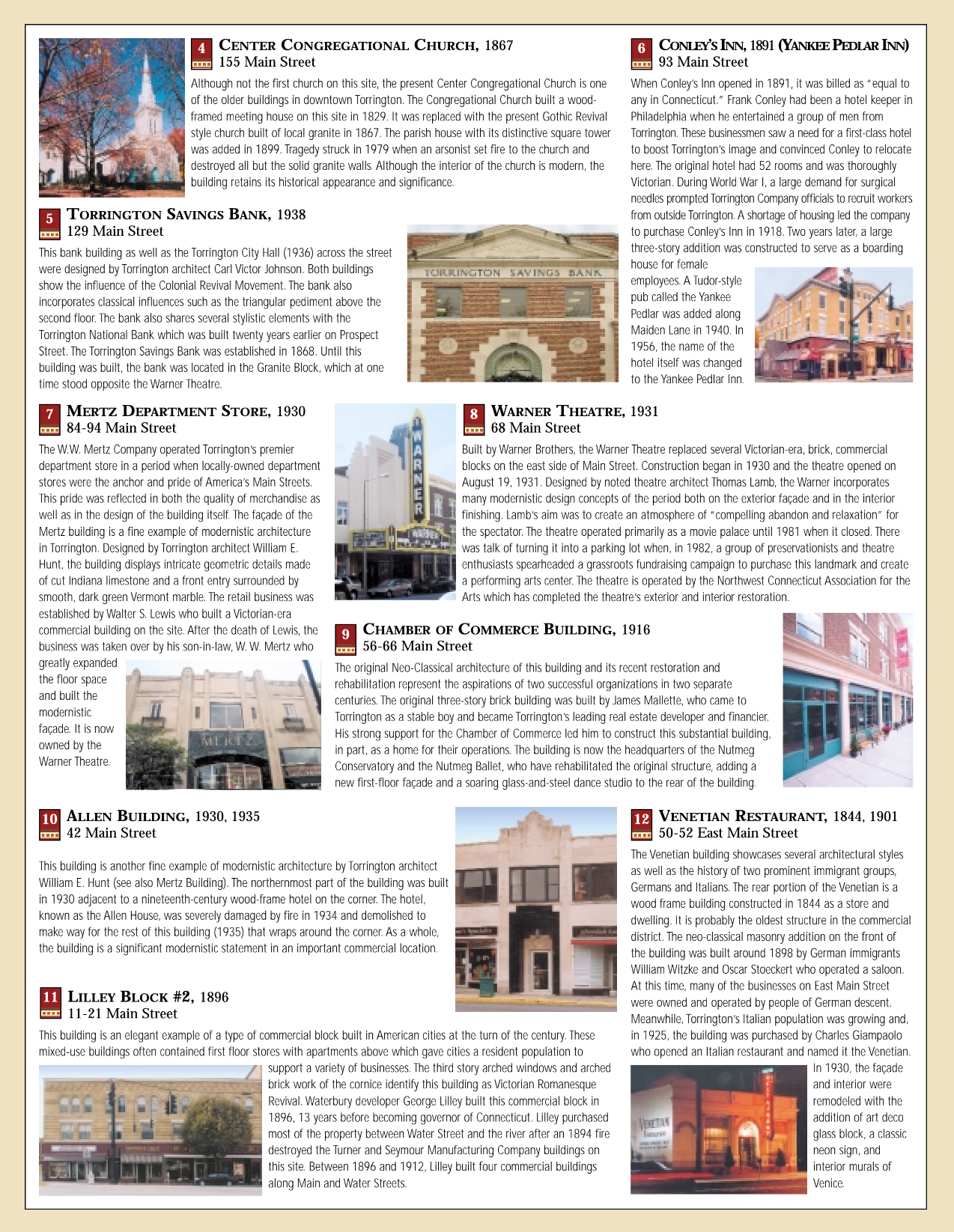
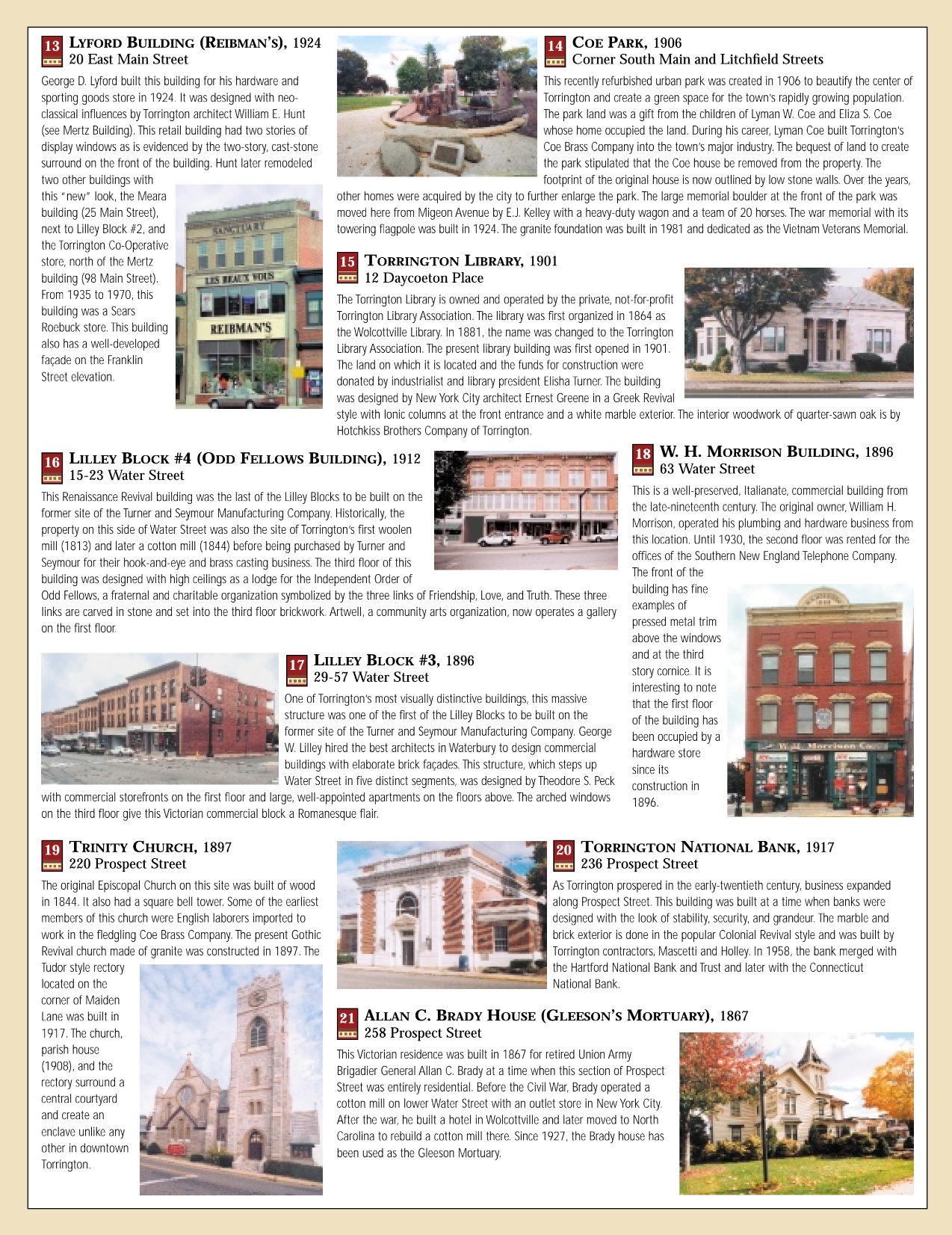
How to take the self-guided audio tour
To take the audio tour, walk through Historic Downtown Torrington and
use the QR code reader on your smart phone to access the audio recordings for each historic building.
The QR codes are located on 8 x 10 inch signs attached to each building on the tour or on sign posts near the sidewalk in front of featured sites.
If you do not have a code reader app on your
smart phone you can go directly to the audio tour website for a list of featured sites. Touch the building name to open the page for that building. Press the play arrow to begin the audio.
Although the tour can be started at any of the 21 features attractions, it has been designed to begin with the Hotchkiss-Fyler House Museum at 192 Main Street where free parking is available.
The audio tour is a partial loop of about ½ mile.
- The Tour starts with the Hotchkiss- Fyler House Museum at 192 Main Street and progresses down Main Street to Center Square also known as the Five Points Intersection.
- The tour makes a short side trip up East Main Street as far as the Venetian Restaurant
- Doubling back to the center, the tour crosses the Naugatuck River on Center Bridge and continues with Coe Memorial Park and the Torrington Library.
- The tour re-crosses Center Bridge and goes up Water Street turning right onto Prospect Street where it ends at the Allen G. Brady House located at 258 Prospect St.

